Job Order Costing System Vs Process Costing System
Job order costing system vs process costing system. Job order costing is used to value inventory when the product or service is made-to-order and standard costing is used when products are identical to each other. Job cost systems have one Work in Process Inventory account for each job. The costing system you choose however depends on the type of business you operate.
A job order cost system is often more expensive to maintain than a basic process costing system since there is a cost associated with assigning the individual material and labor to the product. A process cost system process costing accumulates costs incurred to produce a product according to the processes or departments a product goes through on its way to completion. A hand carved marble statue would get job order costing.
Job Order Costing System. In Job Costing the cost is calculated for each job but in Process Costing first of all the cost of each process is calculated which is then dispersed over the number of units produced. Examples are provided to illustr.
The main difference between job order costing and process costing is the situations in which they are applied. Think about which of these explanations applies to your business. For example Dell makes personal computers based on.
Much more record keeping is required for job costing since time and materials must be charged to specific jobs. Process costing because all customers are applying for the same loan program. A job order costing system accumulates costs for each batch or job.
Job costing is used for very small production runs and process costing is used for large production runs. Typically used by companies that make unique or special-order products such as customized publications built-in cabinets or made-to-order draperies. Size of job.
The date the material was retrieved from inventory. Process costing aggregates costs and so requires less record keeping.
The type of costing method you use depends on the type of business youre running.
Process costing looks at the cost of making thousands or millions of individual items. Job order costing looks at how much an individual item costs to manufacture. Differences between two-process cost systems Part 3 Compare and contrast the cost methods examined in this project. Job order costing is used to value inventory when the product or service is made-to-order and standard costing is used when products are identical to each other. Job order costing is used in situations where clients require customized products which means that each product or each unit of output is unique. Job Costing is performed where the products produced of a specialized nature whereas Process Costing is used where standardized products are produced. This video discusses the differences between job-order costing and process costing in the context of managerial accounting. The unique job number The exact amount of material retrieved Item number and description How much each material item costs Total of all. In Job Costing the cost is calculated for each job but in Process Costing first of all the cost of each process is calculated which is then dispersed over the number of units produced.
Much more record keeping is required for job costing since time and materials must be charged to specific jobs. Job Order Costing System. A hand carved marble statue would get job order costing. Job cost systems have one Work in Process Inventory account for each job. Much more record keeping is required for job costing since time and materials must be charged to specific jobs. The assignment of direct materials and direct labor to each production unit illustrates the job order costing systems focus on prime costs in contrast to the process costing system which assigns costs to the department and focuses on direct materials and conversion costs which are composed of a combination of direct labor and overhead. Traces production costs to processes departments or work cells and then assigns the costs to products manufactured.



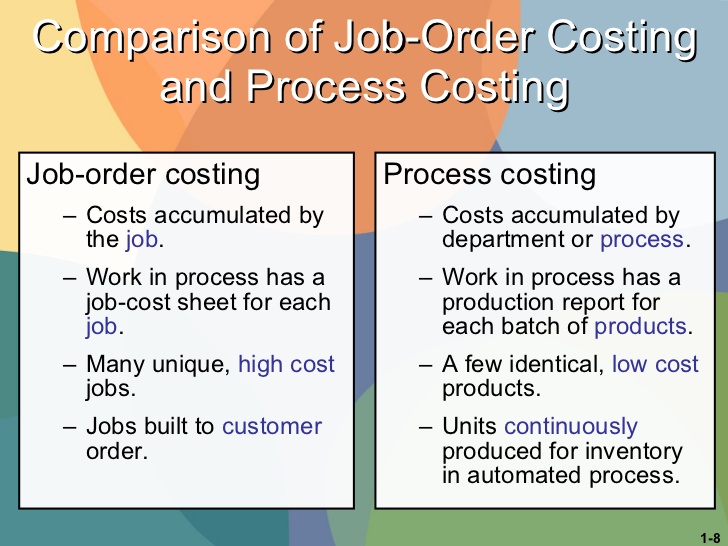

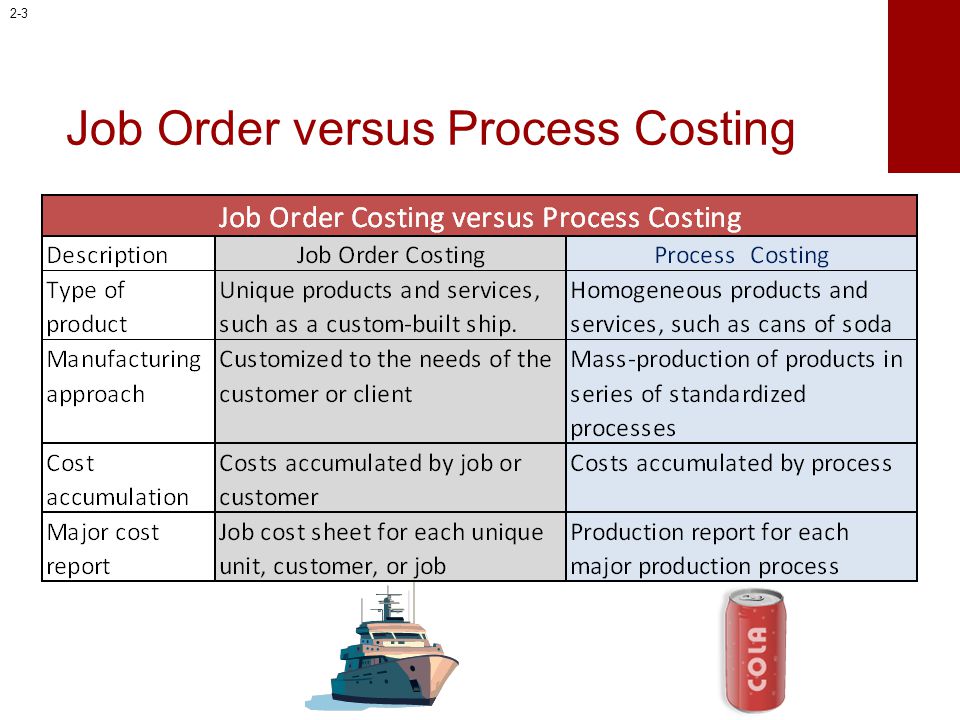
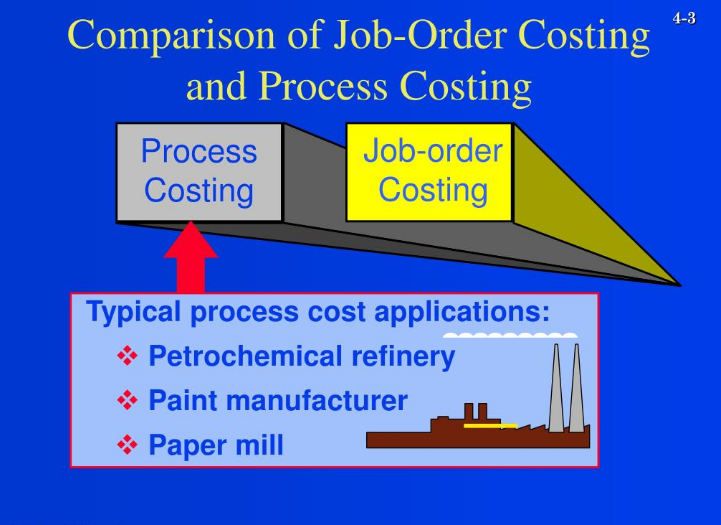
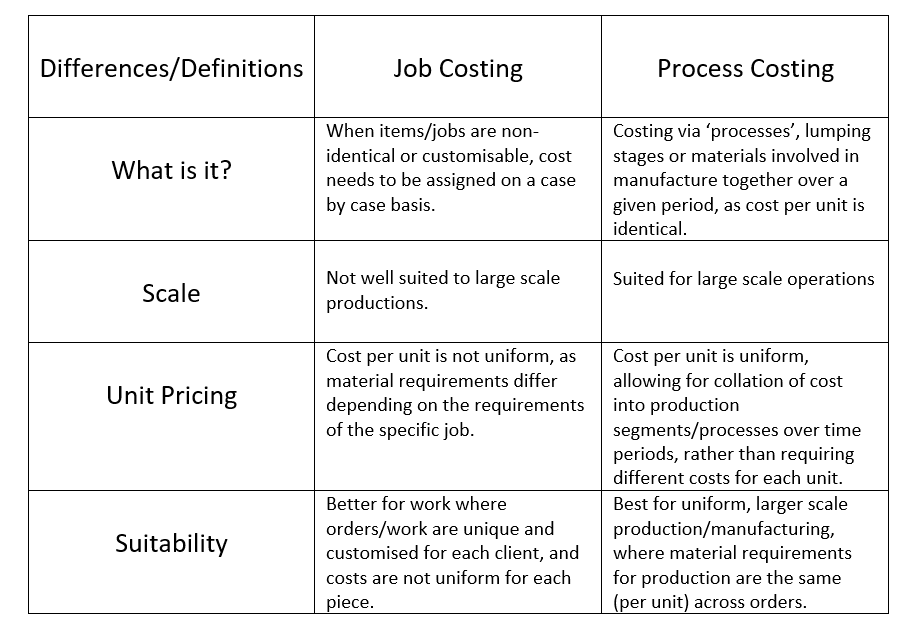

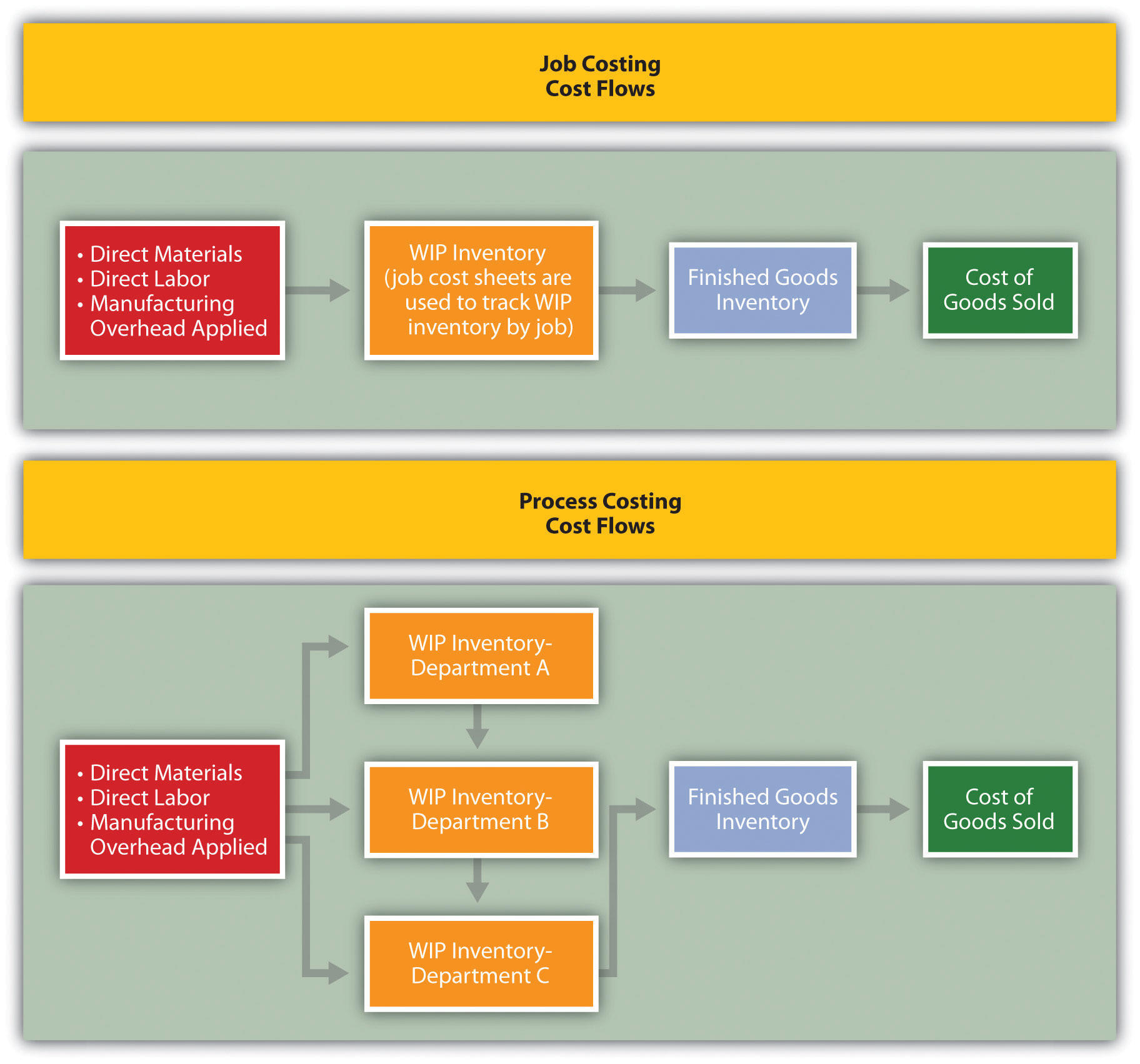
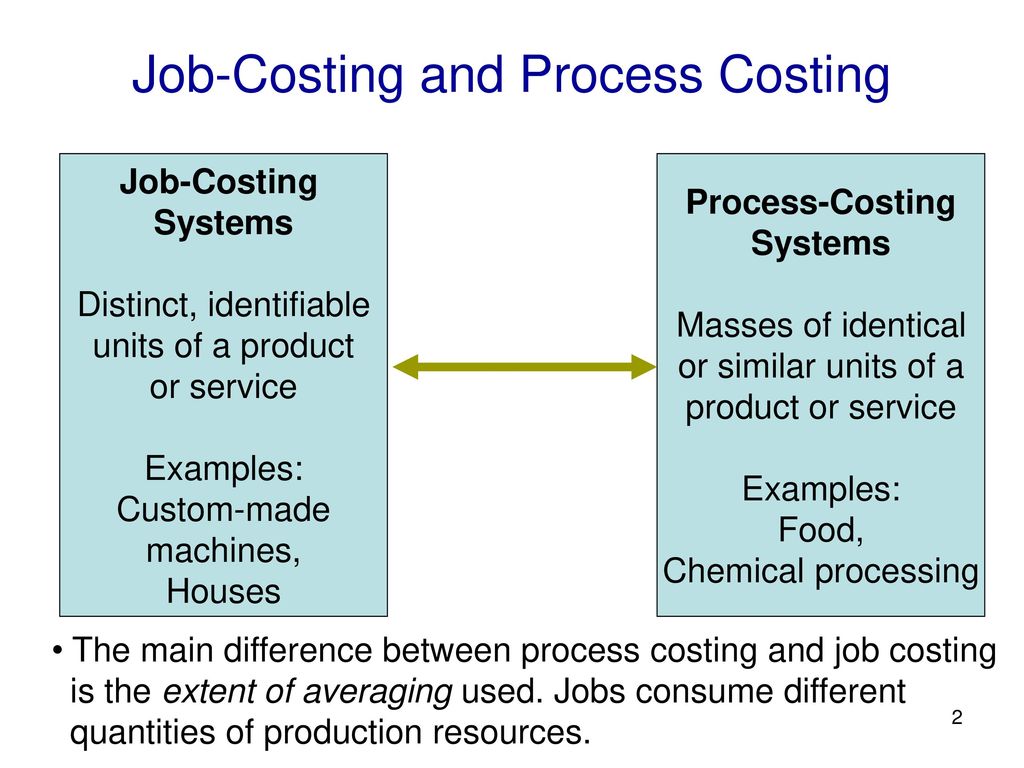



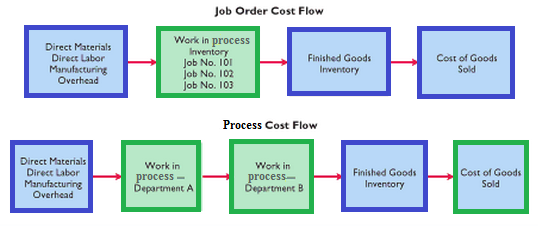
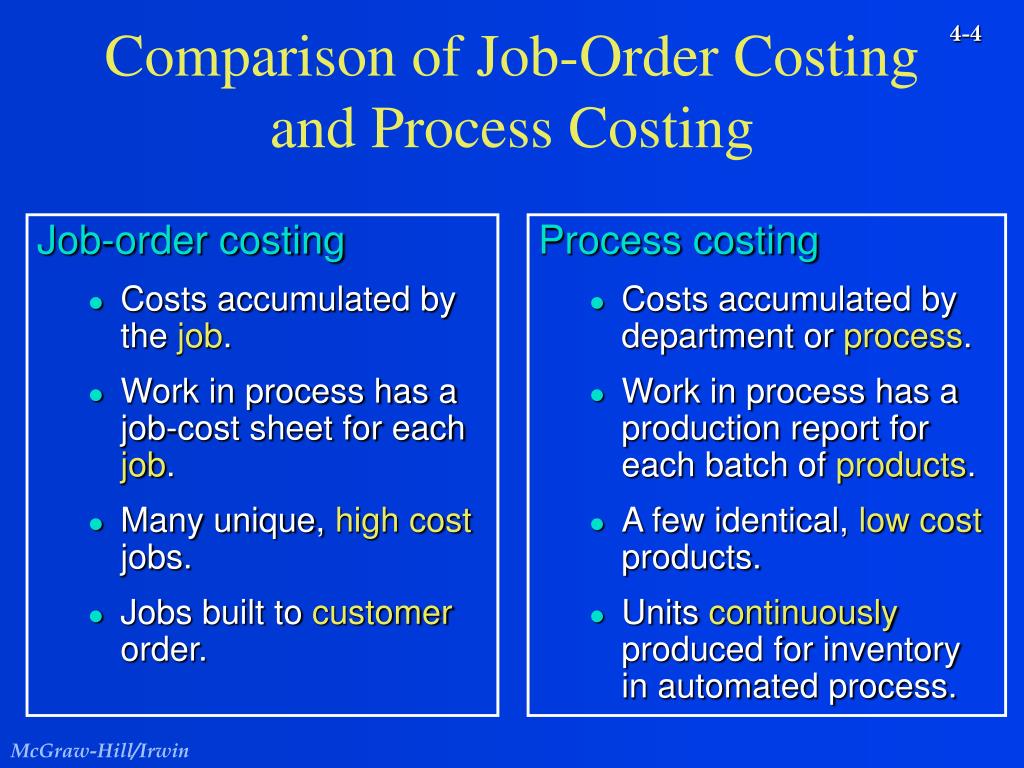


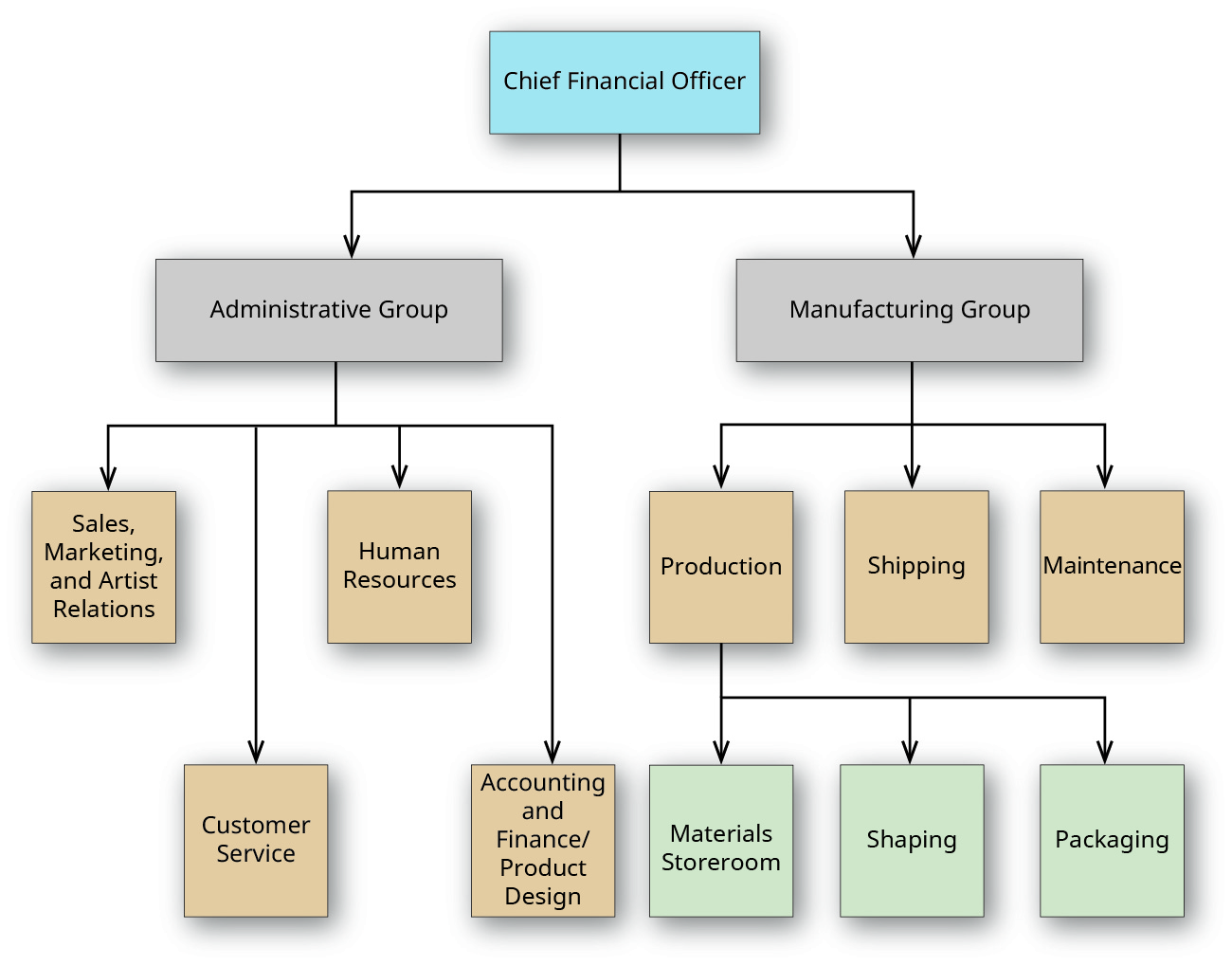

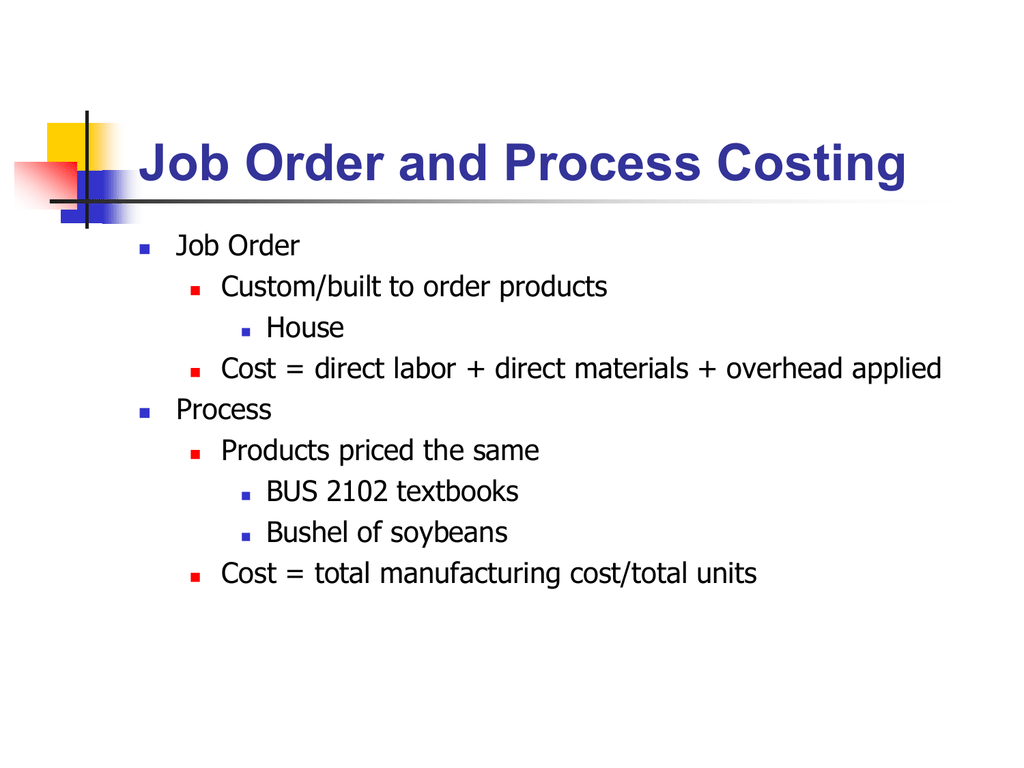


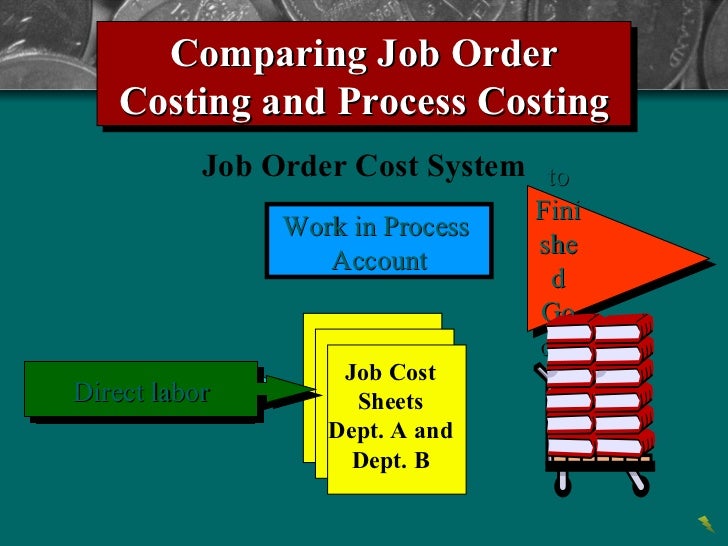

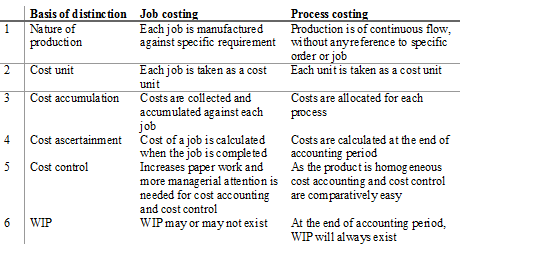









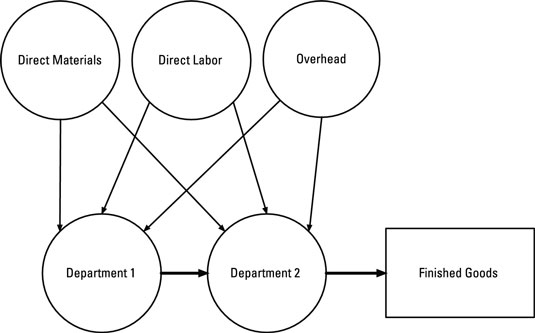

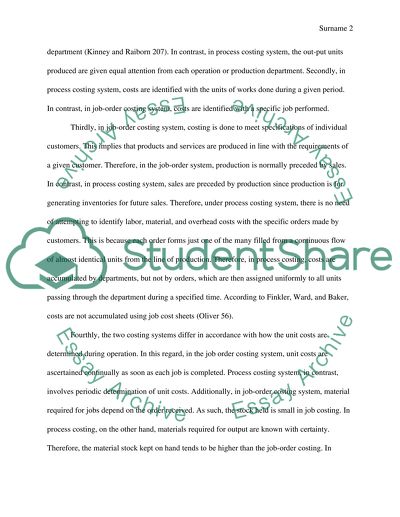






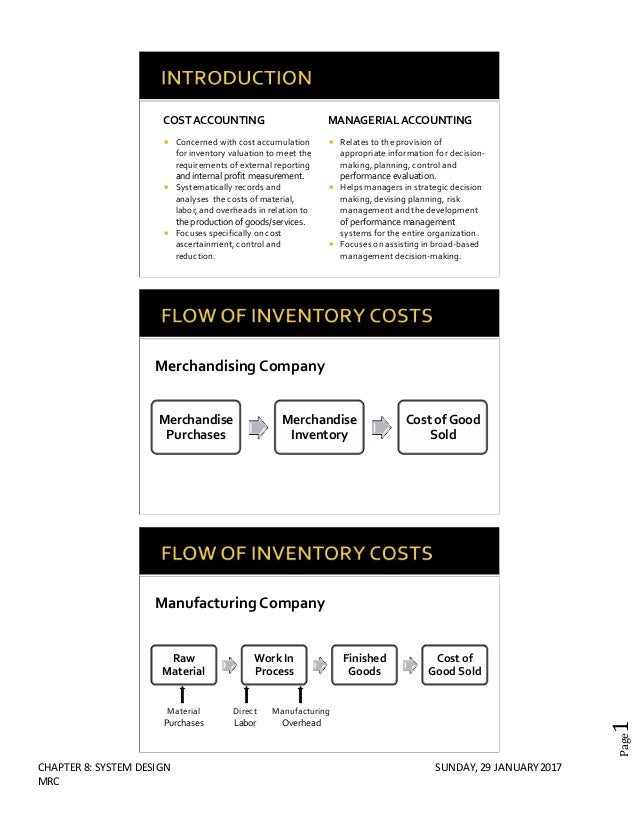

Post a Comment for "Job Order Costing System Vs Process Costing System"